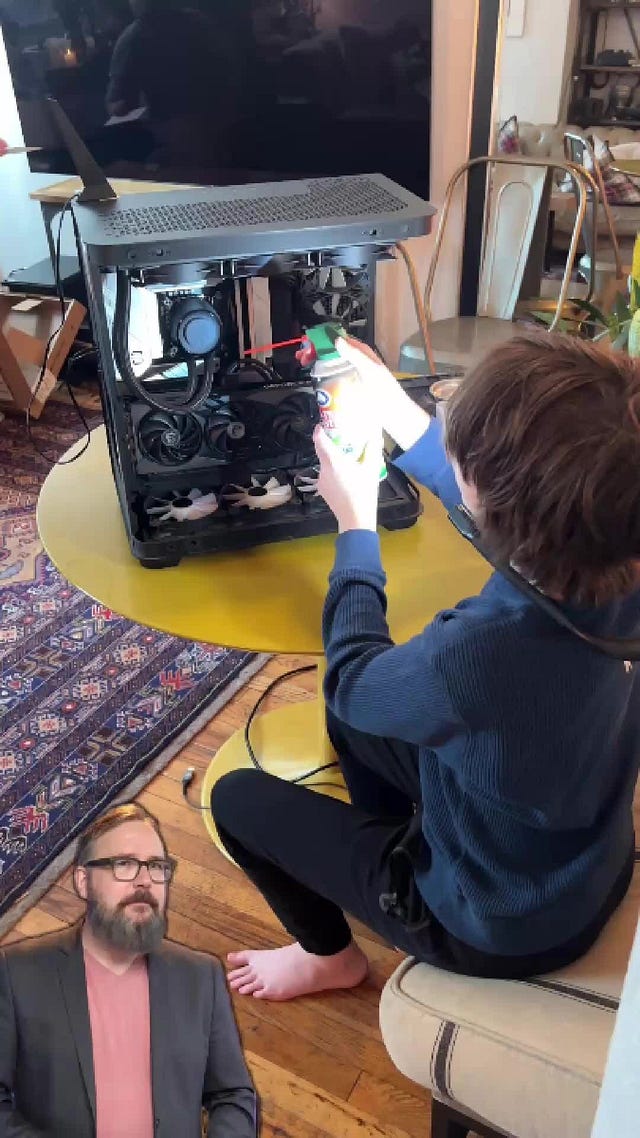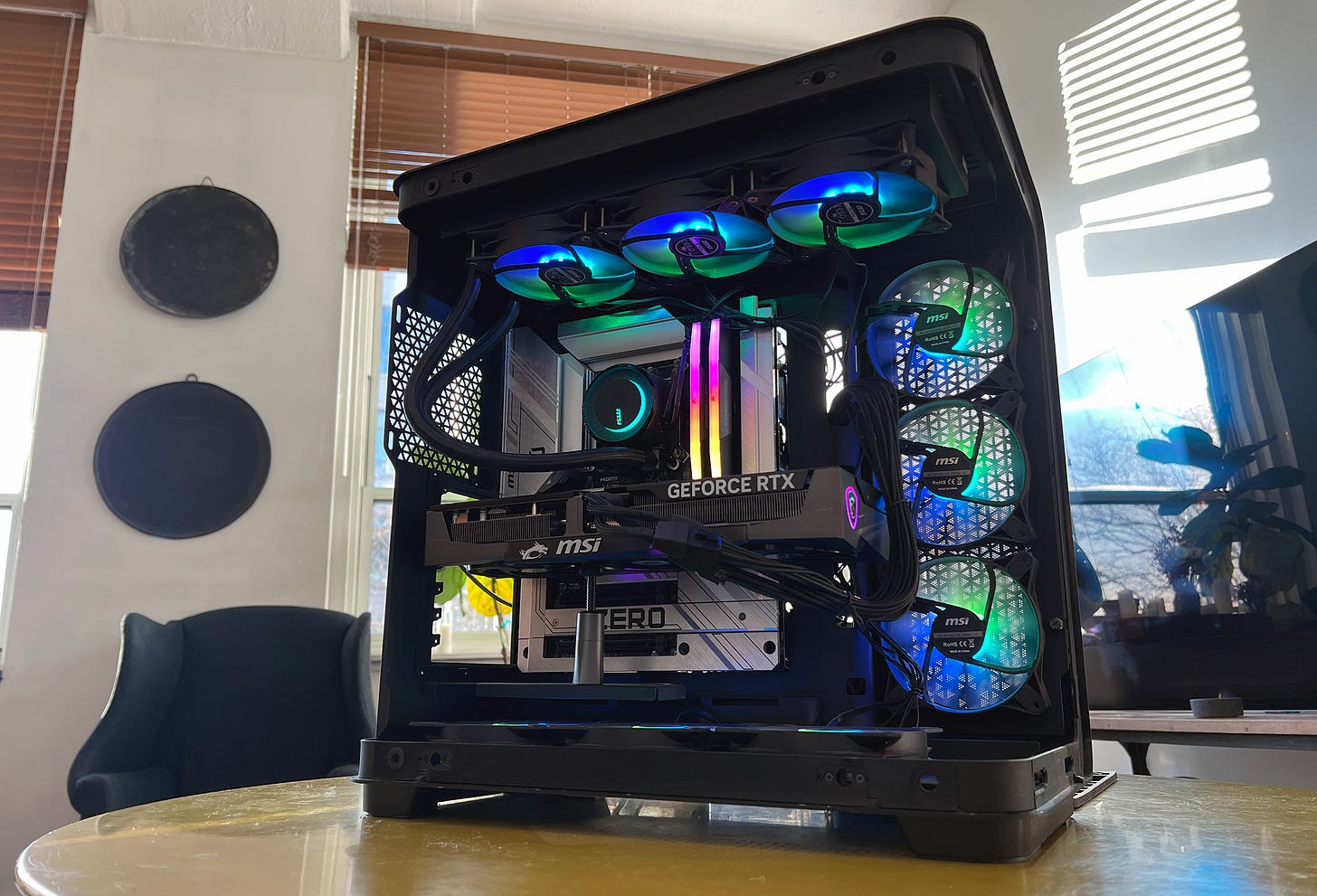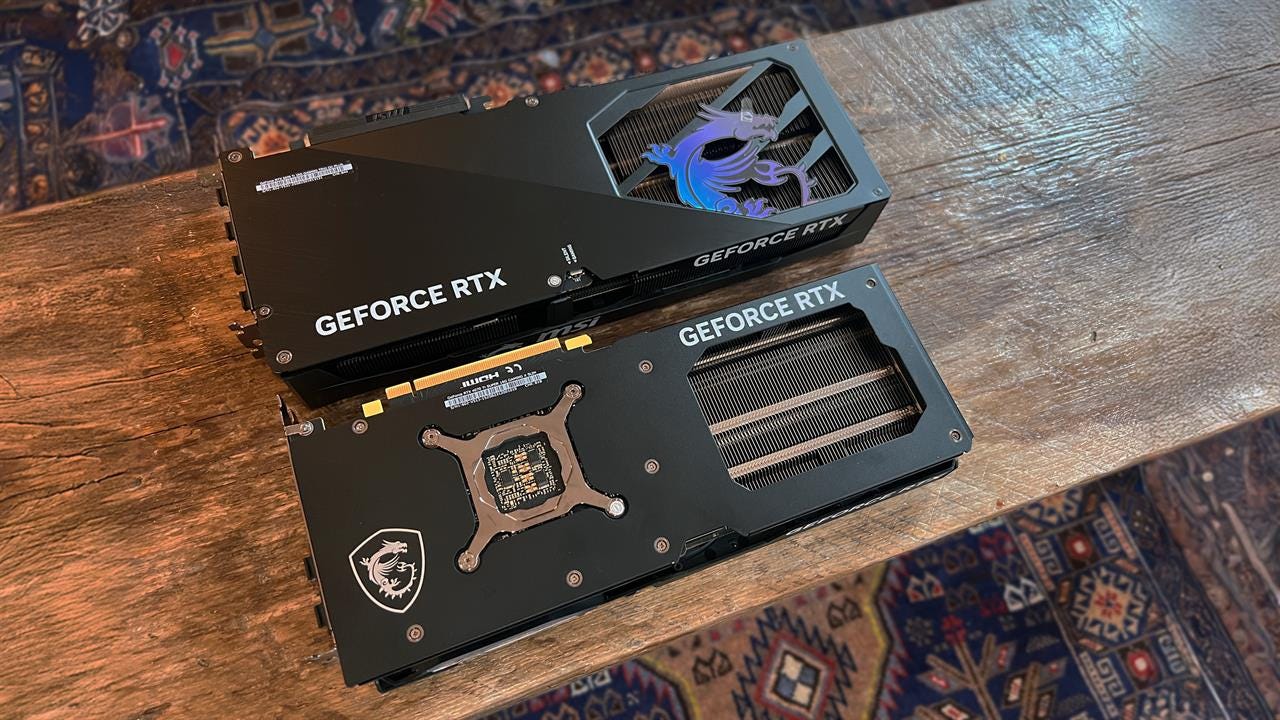The Great GPU Upgrade Adventure
Want 300fps? Check out my Nvidia 5070 Ti installation and first benchmarks to see how.
There’s no better time to be a tech tinkerer than new computer component season.
With built-up demand for the new Nvidia 50 Series graphics cards, and also new AMD GPUs coming in March alongside 50 Series gaming laptops, it was time to finally dive in first-hand.
My project was to take an existing gaming desktop in my home office and swap in a new Nvidia 5070 Ti graphics card, the MSI Gaming Trio OC Plus.
The first step was to remove the old card. But, this is not a typical upgrade. This is my main test bench and I was replacing a still fairly recent Nvidia 4070 Ti Super with a new Nvidia 5070 Ti.
That 4070 Ti card I’m replacing has been a great performer, especially paired in this desktop with an 14th-gen Intel Core i7 and 32GB of RAM, but that makes this a gen-over-gen upgrade, which is not what I’d typically recommend. A card like this is really perfect for someone who is a couple of generations behind, for example with an Nvidia 30 Series or 20 Series card.
Cracking open the 5070 Ti box, it was interesting to see just how much bigger this 50 Series card was compared to the 40 Series one. Next to each other, the 5070 Ti was at least an inch longer and half an inch wider.
But it wasn’t as simple as just popping one card out and another card in. In fact, this new 5070 Ti card required three 8-pin PCIe cables from the PSU, instead of just two with the card I had in there before.
So I had to go into my bag of leftover cables and dig one out, then thread it through back of my rear-connection motherboard (MSI Project Zero), a design which hides most of the cables, but make wiring a little harder. At least I've got a 1300W power supply, so I should be good for another couple of generations at least.
Because this card is so big and heavy, I wanted to make sure it would be secure in the case, so I made sure my GPU stand was screwed in and the card was properly seated in the riser cable extension.

 Tiktok failed to load.
Tiktok failed to load.Enable 3rd party cookies or use another browser
Then it was finally time to turn everything on. All the lights came on, including the lights on the GPU itself, so that was a good sign.
Things swiftly went downhill from there. The system recognized the card, but crashed every time I started a game or benchmark test.
It turns out I had actually missed an important detail along the way! These new 50-series cards need to be plugged directly into the motherboard, not into a riser cable. So I had to reinstall the card horizontally and carefully add a support under it.
That put the power cable coming out of the side, and I was concerned there wouldn't be enough clearance to put the case cover back on. But when I reassembled the whole case, there was just enough room.
Then it was time for some benchmarking! Cyberpunk 2077 is everyone's fave game to benchmark these days. I got a nice boost in a like-for-like test, and a huge gain when I turned on the 4X DLSS frame generation. Some initial test results are below, and you can find more at microcenter.news.
More on the 5070 Ti launch:




